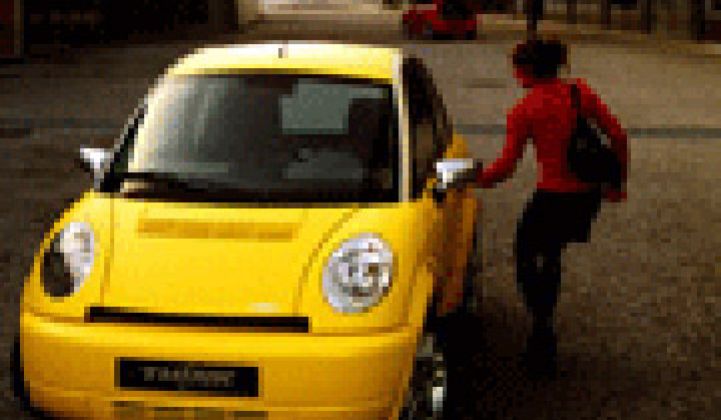Think!, the all-electric car maker from Norway, formally announced that it will try to sell its car for $33,995 when it arrives in the U.S., a price that puts it on par with the all-electrics from Nissan and Mitsubishi.
How can a relatively new startup compete on price against two established manufacturers? The battery in the Think! City, after all, will be 24 kilowatt-hours, the same size as the battery in the Leaf. By contrast, Coda's sedan, arriving with a 33.8 kilowatt-hour battery in the third quarter of next year, will sell for $45,000.
The answer? The company employs plastic panels instead of metal ones to cover the car.
"The car still has a shell frame underneath," said CMO Michael Lock. The shell, however, is a high-grade polymer. Using plastic reduces the tooling and construction costs. It also means the car doesn't have to be painted: the native color of the plastic becomes the color of the car.
"You could take a running karate kick at our car and not put a dent in the panel," he said.
The first 300 cars from Think! will go to fleet customers like the state of Indiana next month. Think! built an assembly plant in the state, which is also home to its battery maker, Ener1. Cars will start to ship to consumers in the second quarter of 2011. In 2011, Think! wants to ship 8,000 to 10,000 cars worldwide, with 2,000 or so of that total going to the U.S. Yes, it's a drop in the bucket compared to the total number of cars that will ship, but still a sizeable number in the electric car market. GM will only have shipped around 10,000 to 12,000 Volts by that time.
The price, he added, has come down substantially. When Think! started limited production a few years ago, the car cost around 40,000 euros -- a lot for something that was barely freeway-legal. Now the European version sells for around 30,000 euros. In cities like Vienna, the subsidies bring it down to 20,000 euros.
The company plans to bring just the two-seater to the U.S. soon (it sells two- and four-seaters in Europe). The four-seater, however, only costs about 1,000 euros more, so conceivably, it could make its way stateside, too.



